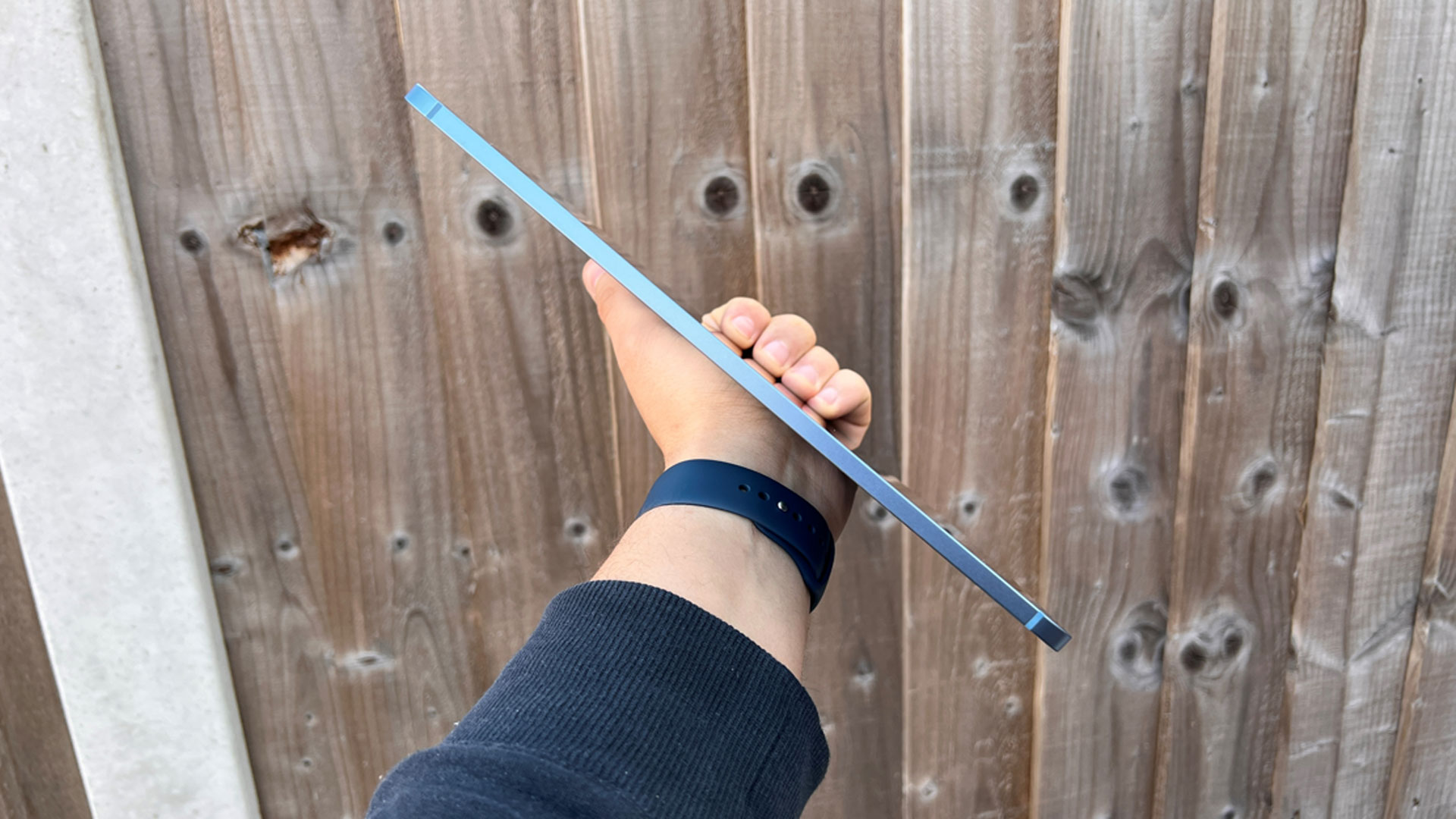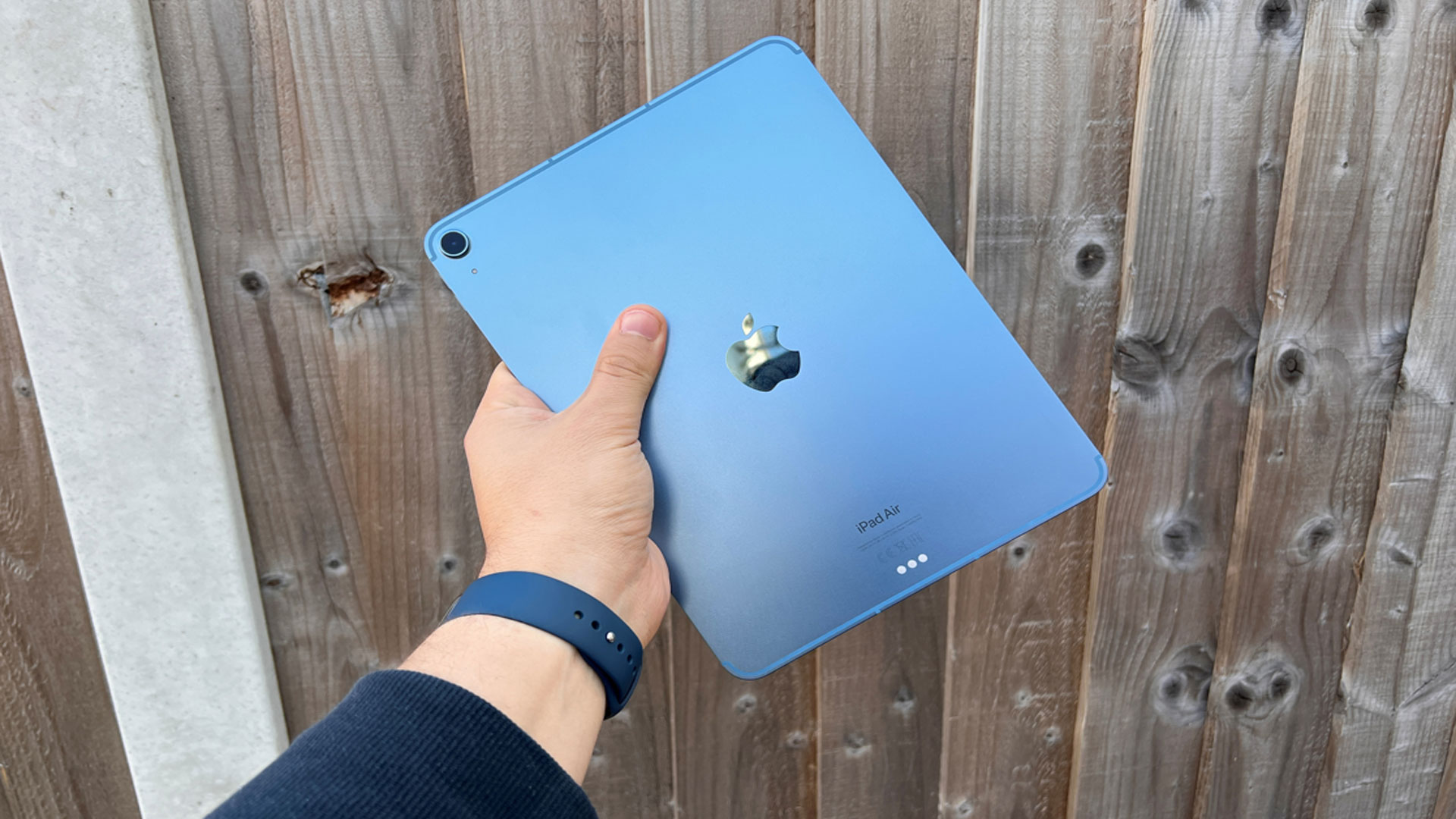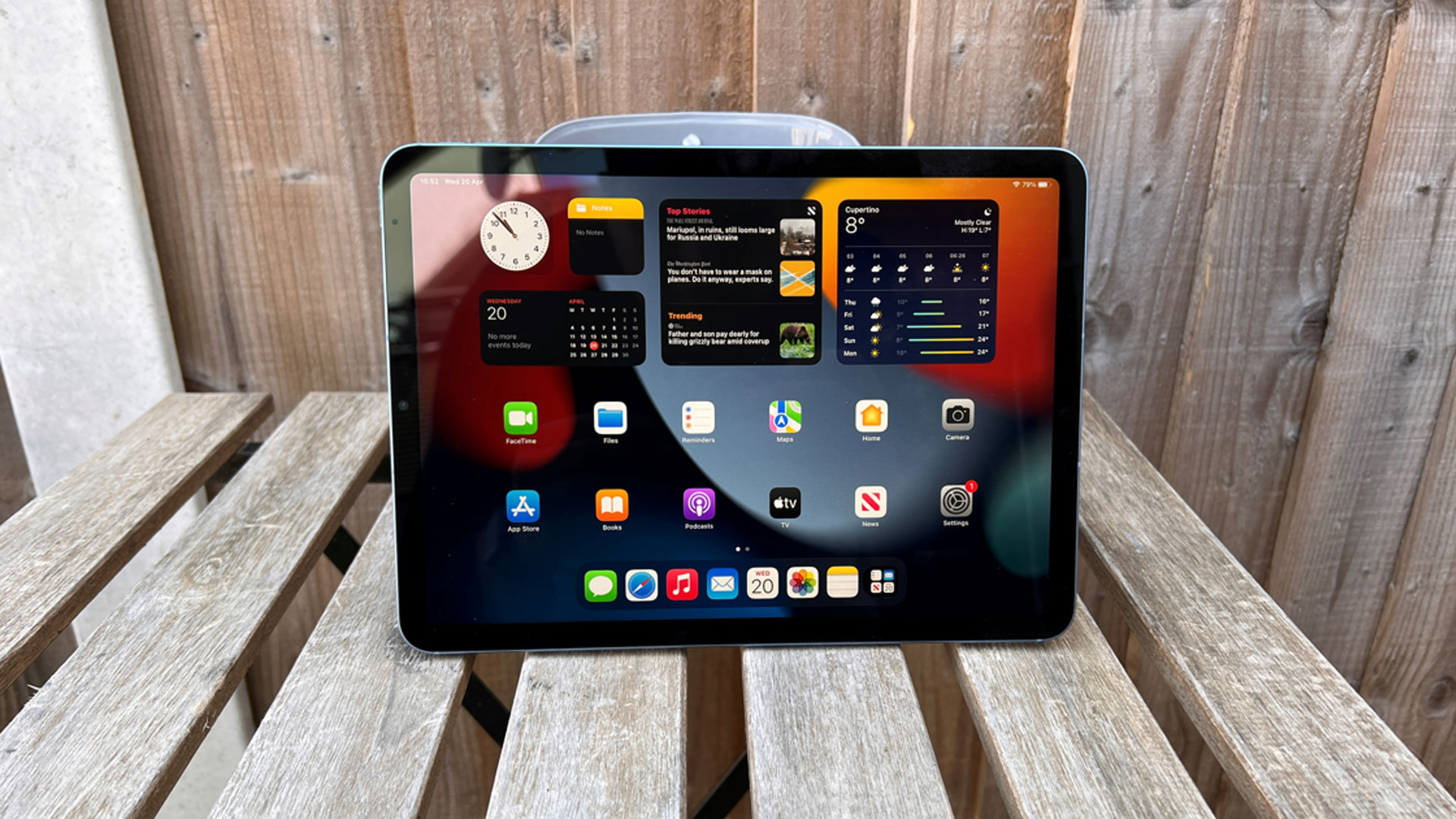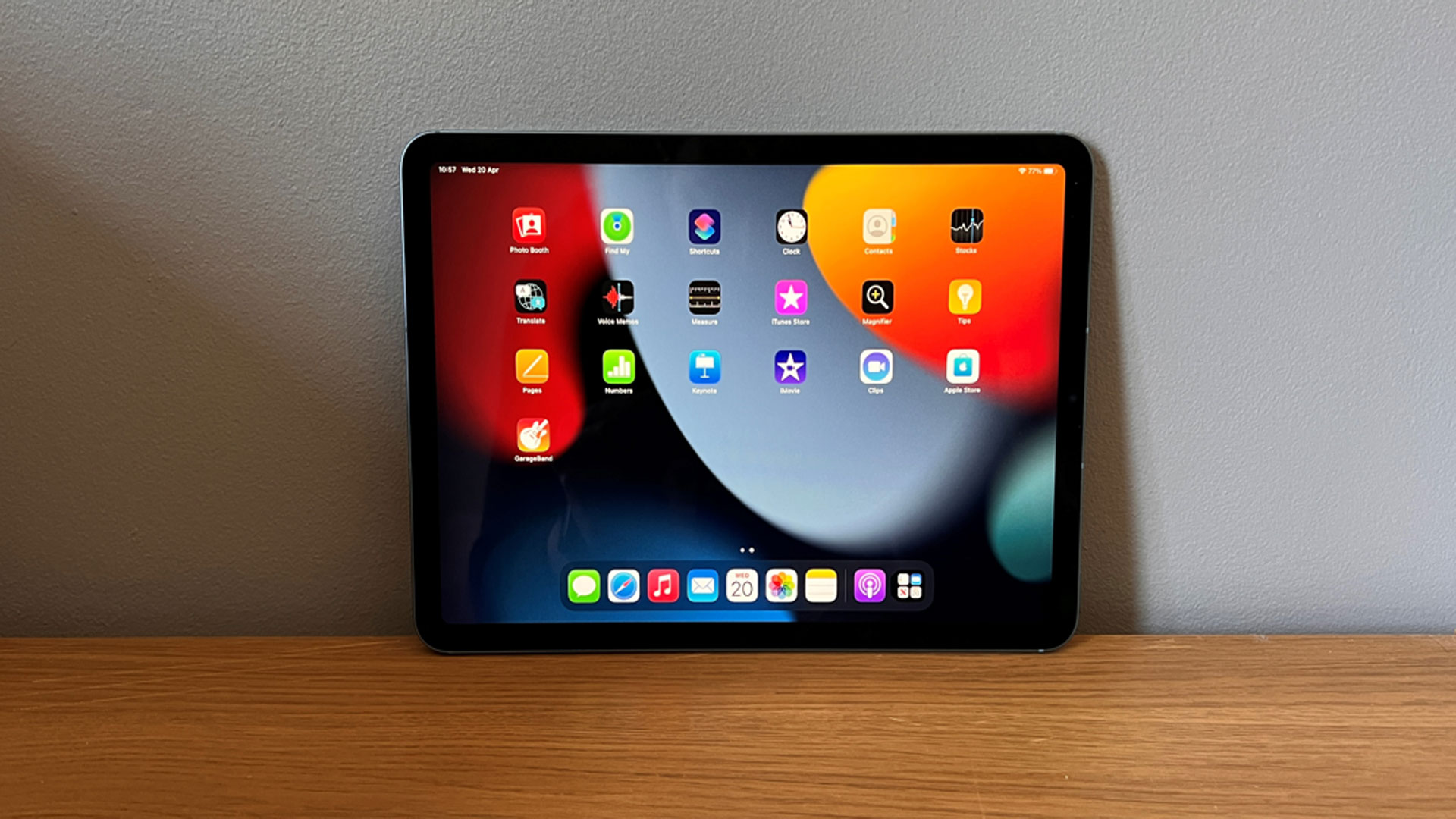The iPad Air fifth-generation (2022) is without a doubt one of the best tablets that money can buy. It takes almost everything great about the 11-inch iPad Pro, adds in the M1 chip from Apple’s Mac machines, and weighs just over a single pound.
Display size: 10.9 inches
Display: LED-backlit Liquid Retina display (2360x1640 resolution)
Capacity: 64GB or 256GB
Chip: Apple M1
Camera: 12MP rear camera, 12MP front camera with Centre Stage
Video recording: Up to 4K recording at multiple frame rates
Speakers: Stereo
SIM card: E-SIM for cellular models
Weight: 1.02 lbs
That makes it ideal for anyone looking for portability without sacrificing screen size for the iPad Mini, while also offering a huge amount of power that’s likely to both surprise and delight.
There are issues, though. For one, iPadOS 15 remains a solid, if unadventurous release, while the modularity of the iPad line means that while you can pick up a keyboard and Apple Pencil if you want them, you’ll be paying a pretty penny for each. Then there are some features that remain iPad Pro exclusives, like higher refresh rates.
For the money, though, there’s no better tablet you can buy right now.
iPad Air: Design
- Thin and light
- Touch ID built into the top button
- Five colors: Blue, Space Grey, Starlight, Pink, Purple
If you’ve seen an iPad in the last few years, the iPad Air may look a little nondescript. That’s no bad thing, though, it’s just that there are only so many times we can see a tablet this good-looking before it starts to feel like the norm.
And yet, the iPad Air has never looked better. Our review unit is the Blue version, and it feels the closest to being that “piece of glass” ideal that Apple has strived for for years. It weighs just over a pound, the display is clear and bright, and those thin bezels make all the difference – particularly if you’re coming from an older iPad.

It looks closer than ever to the iPad Pro 11-inch, and while the display is a hair smaller, the footprint remains more or less the same. That means you can attach the Magic Keyboard and it becomes something akin to a laptop.
Aside from the display at the front, you’ll find a camera hidden in the “top” bezel, while there’s a USB-C port on the bottom, and a volume rocker on the right-hand side. The top button, used for waking and snoozing the device, has a Touch ID sensor built-in for unlocking using your fingerprint. That means that FaceID remains an iPad Pro (and iPhone) feature for now.

iPad Air: Performance
- Apple M1 chip is unmatched in tablets
- iPadOS requires further refinement
- Easy to use
If you’ve used one of Apple’s recent Apple Silicon-based computers, then you may have already felt the power of the company’s M1 architecture.
Built for the Mac but now found in both the iPad Air and iPad Pro lines, it’s a cut above other tablets and can outperform many laptops, too. The version here offers an 8-core CPU and an 8-core GPU, with 8GB of RAM shared between the two.
While on Macs this has led to a huge advancement in terms of power efficiency as well as performance, Apple’s A-series chips were already sipping battery rather than chugging it. The M1 in an iPad, then, is all about the horsepower.
You can open dozens of apps at once, switch between them with ease, and never once experience any slowdown. Demanding games, like League of Legends: Wild Rift look great, too.

Our only complaint, and it really is a minor one, is that we’d have liked a higher refresh rate. The iPad Air offers a 60Hz panel, but because we’ve been spoiled by the ProMotion tech of the iPad Pro, it feels slower than perhaps it otherwise would.
With that said, we’re so impressed by the iPad Air that we suppose Apple needed more reasons to keep the Pro line around.
Another reason you may end up plumping for the more expensive Pro is in terms of storage options. Sadly, the iPad Air comes in just two configurations; 64GB or 256GB. A 128GB version would have been ideal, but the iPad Pro starts at that size instead. It’s worth considering if you’re expecting to transport a lot of data around.
Sadly, though, iPadOS feels a little like a chain around the M1’s neck. It’s not a bad OS, far from it, but the power of the M1 chip feels a little like buying a Ferrari when the only place you can go is your neighbor’s driveway. Proper external display support, a more intuitive file manager, and multi-user support are still absent, but we’ll keep our fingers crossed for WWDC in June.
iPad Air: Battery life
Apple claims you’ll get around 10 hours of video playback on the iPad Air or 9 hours of web browsing in Safari, and we’re hard-pressed to disagree.
Considering the power on offer, that’s not bad, especially in a device this slim and light. Your mileage, as always, will vary based on what you throw at the M1. If you’re booting up Lumafusion to work on a video project, you’re going to be reaching for the charger sooner than if you’re firing off a few emails or scrolling through Twitter.

iPad Air: Price
Here’s the rub – the iPad Air offers the same performance with some caveats for $200 less than the iPad Pro 11-inch, starting at $599 for the 64GB version. The 256GB version will set you back $749, which is still $150 cheaper than the comparable iPad Pro.
If you want to add a cellular connection, which now includes 5G, that starts at $749 and rises to $899 for the 256GB version.
If you’re looking to add a keyboard, the cheapest option is Apple’s Smart Keyboard Folio for $179, while the admittedly excellent Magic Keyboard starts at $299. The Apple Pencil, on the other hand, is $129.
iPad Air: User reviews
Amazon reviews have been positive for the latest iPad Air, with many noting the ease of use of Touch ID for fingerprint scanning, while others have noted the speed. The current star rating at the time of writing is an impressive 4.5 out of 5.
Some, however, feel battery life could be better, with one user noting that he’s “quite shocked at how the battery life is so much worse than the 12.9-inch [iPad] Pro”, likely due to the smaller chassis.
Should you buy the iPad Air?
For the vast majority of people looking for an iPad that’ll last them a few years while offering enough power for work and play, the iPad Air 2022 is ideal.
Pair it with a pencil or keyboard for creativity or productivity, or keep it as is and watch movies and play games on it.
If this product isn't for you
If you’re in need of more storage, would prefer FaceID, or simply must have the higher refresh rate of the iPad Pro, then you’ll find what you’re looking for – at a price. While the 11-inch screen size increase is negligible over the iPad Air, the iPad Pro also goes up to a 12.9-inch version.
There’s also the more basic iPad, which uses the A13 Bionic chip. It’s still plenty fast enough, although it does still have the Lightning connector and chunkier bezels.
The iPad Mini is another excellent option. Its display is 8.3-inches big, meaning it can fit in some pockets, and it still works with the Apple Pencil which makes it an ideal notepad.
Outside of the Apple ecosystem, the Samsung Galaxy Tab S8 is the best Android tablet you can buy, but it’s not cheap at around $700. For that money, you get a great display and battery life, with the S-Pen included, but it actually offers less in terms of performance than the iPad Air.


